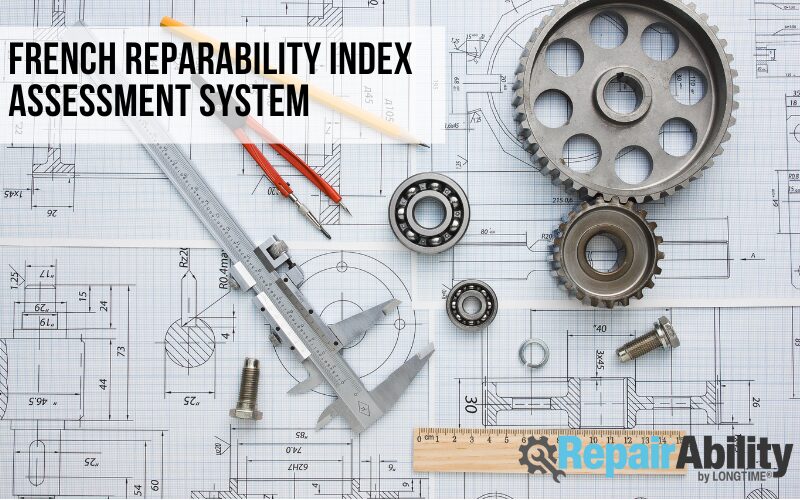
French reparability index assessment system: methodologies, criteria and labelling
The reparability index is a regulatory tool that has become strategic, enabling companies to meet environmental and regulatory requirements while satisfying the growing expectations of consumers. The adoption of standards and certifications guarantees the transparency and reliability of assessments. This article explores the methodologies used to calculate this index, the criteria influencing its rating, and the issues surrounding its labelling and adoption by the industry.
Context and challenges of the reparability index in France
The introduction of the reparability index in France is part of the AGEC law (Anti-Waste for a Circular Economy), with the aim of combating programmed obsolescence and promoting sustainable industrial practices. For manufacturers, this represents a major strategic challenge, requiring both regulatory compliance and alignment with the expectations of consumers, who are increasingly sensitive to the sustainability of products.
By providing clear information on the repairability of equipment throughout its life cycle, this index becomes a real competitive advantage for companies.
French reparability index assessment system: methodologies, criteria and labelling
The reparability index is a regulatory tool that has become strategic, enabling companies to meet environmental and regulatory requirements while satisfying the growing expectations of consumers. The adoption of standards and certifications guarantees the transparency and reliability of assessments. This article explores the methodologies used to calculate this index, the criteria influencing its rating, and the issues surrounding its labelling and adoption by the industry.
Impact sur le marché des produits électroniques et électroménagers
The reparability index has a direct influence on industrial strategies and consumer perceptions of products.
Positive impacts
-Increased eco-responsibility: It encourages the choice of more sustainable products and supports the circular economy by limiting electronic waste.
–Competitive differentiation: Companies that incorporate reparability principles gain an advantage in the marketplace.
-Long-term cost reduction: Extending the life of products reduces the total cost of ownership for consumers.
Encouragement of innovation: The index encourages modular design and standardisation of spare parts.
Negative impacts
-Increased design costs: Incorporating reparability criteria can generate additional costs for manufacturers.
-Ambiguous quality signal: The repairability of a product does not guarantee its quality. A product may be highly repairable but of low quality.
-Compromise with other criteria: Striking a balance between repairability, reliability, performance and aesthetics can be complex.
Although the reparability index has obvious advantages, it also poses challenges for businesses, particularly in terms of costs and regulatory compliance. The main obstacle, however, remains the limited scope of products covered. At present, only around ten product categories are covered by a regulatory index, which is not enough to significantly transform the market, but is a first step in raising awareness in the industry.
Decoding the rating criteria
- Availability of spare parts: The longer they are available after purchase, at a reasonable cost and with short delivery times, the higher the repairability score.
- Access to technical documentation: Clear documentation enables professionals and private individuals to repair a product without expert knowledge.
- Complexity of disassembly: The fewer specialised tools and disassembly steps a product requires, the better its repairability.
- Maintenance policy: A good after-sales service and efficient technical assistance increase the repairability score.
Certification systems and standardisation of methodologies
Towards international harmonisation: ISO and European standards
The adoption of international standards such as ISO 59014 makes it possible to harmonise the assessment of reparability across markets.
Standardisation at European level facilitates the free movement of products and enhances the comparability of reparability indices.
Existing certification systems: labels and accredited bodies
Labels such as LONGTIME certify that products comply with strict reparability criteria. Accredited bodies assess manufacturers and guarantee the reliability of certifications.
Methodology for assessing reparability
For the reparability index to be a reliable tool, it is essential that the assessment criteria are clearly communicated and that independent audits are put in place to guarantee the impartiality of the ratings. At present, the index operates on the basis of self-declaration, but some organisations offer voluntary verification services.
To enhance the transparency and credibility of the rating system, random checks by a third party should be considered.
Labelling and communication of the reparability index
Legal display obligations: European regulatory framework
Since the decree of 29 December 2020, the display of the reparability index has been mandatory in shops and online. It must be clearly visible alongside the price to effectively inform consumers.
Communication strategies in B2B and B2C
In B2C: Prominence on packaging, websites and points of sale helps to raise consumer awareness.
B2B: The index can be incorporated into technical data sheets and maintenance contracts to encourage companies to favour more repairable products.
Effective communication of the index improves brand image and strengthens companies’ commitment to sustainability.
EN 45554: a standardised process from analysis to results
EN 45554 defines a protocol for assessing the reparability of energy-related products. This European methodological framework takes into account the availability of parts, ease of disassembly, technical documentation and after-sales services.
Measurement tools and key technical indicators
The assessment is based on measurable criteria such as the availability of parts, the time required for a repair and the number of tools required. These indicators provide a precise and objective rating.
Reliability and reproducibility of results
To guarantee consistent and comparable assessments, analyses must follow a rigorous protocol. Regular checks ensure the validity of the results and reinforce the confidence of industrial players.
Conclusion: a tool for continuous improvement for the industry
Far from being a simple rating, the reparability index encourages a profound transformation of industrial practices. It encourages eco-design, optimises access to spare parts and improves after-sales services.
By promoting reparability, manufacturers are boosting their competitiveness while meeting environmental challenges. This index is therefore a strategic lever to support the transition towards a circular economy and more responsible consumption.
